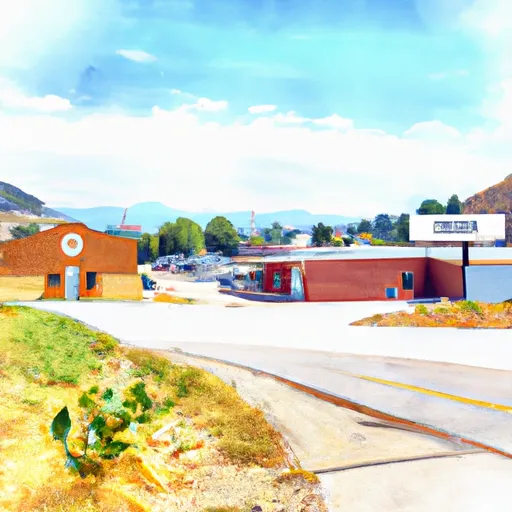-
 Snoflo Premium
Snoflo Premium
Get unlimited access to all our content
With no Ad interruptions! - Start Your Free Trial Login with existing account
Lynndyl
Eden Index
Climate
8.8
•
Recreation
2.0
•
Community
•
Safeguard
4.2/10

Lynndyl, Utah is a small town located in Millard County, in the western part of the state. The town has a semi-arid climate with hot summers and cold winters. Summers are typically dry and hot, with temperatures often exceeding 90°F (32°C), while winters are cold, with temperatures dropping below freezing and occasional snowfall.
Hydrologically, Lynndyl lies in the Sevier River Basin, which encompasses the Sevier River and its tributaries. The Sevier River serves as an important water source for the region, supporting agriculture and wildlife. Lynndyl itself is surrounded by vast desert landscapes, with limited water resources.
Despite its small size, Lynndyl offers a variety of outdoor recreational opportunities. The area is known for its picturesque landscapes and is popular among outdoor enthusiasts for activities such as hiking, camping, and photography. The nearby Fishlake National Forest provides opportunities for fishing, hunting, and wildlife viewing. Additionally, the Great Basin Desert and nearby mountains offer opportunities for off-roading and exploring the unique desert flora and fauna. With its diverse outdoor activities and scenic surroundings, Lynndyl is a destination for those seeking a quiet retreat in the heart of nature.
What is the Eden Index?
The Snoflo Eden Index serves as a comprehensive rating system for regions, evaluating their desirability through a holistic assessment of climate health, outdoor recreation opportunities, and natural disaster risk, acknowledging the profound impact of these factors on livability and well-being.
Climate Health Indicator (CHI): 8.8
Lynndyl receives approximately
281mm of rain per year,
with humidity levels near 56%
and air temperatures averaging around
11°C.
Lynndyl has a plant hardyness factor of
6, meaning
plants and agriculture in this region thrive during a short period during spring and early summer. Most
plants will die off during the colder winter months.
By considering the ideal temperature range, reliable water supplies, clean air, and stable seasonal rain or snowpacks, the Climate Health Indicator (CHI) underscores the significance of a healthy climate as the foundation for quality living.
A healthy climate is paramount for ensuring a high quality of life and livability in a region, fostering both physical well-being and environmental harmony. This can be characterized by ideal temperatures, reliable access to water supplies, clean air, and consistent seasonal rain or snowpacks.
Weather Forecast
Streamflow Conditions
Escalante Desert-Sevier Lake
Area Rivers
Escalante Desert-Sevier Lake
Snowpack Depths
Escalante Desert-Sevier Lake
Reservoir Storage Capacity
Escalante Desert-Sevier Lake
Groundwater Levels
Recreational Opportunity Index (ROI): 2.0
The Recreational Opportunity Index (ROI) recognizes the value of outdoor recreational options, such as parks, hiking trails, camping sites, and fishing spots, while acknowledging that climate plays a pivotal role in ensuring the comfort and consistency of these experiences.
Access to outdoor recreational opportunities, encompassing activities such as parks, hiking, camping, and fishing, is crucial for overall well-being, and the climate plays a pivotal role in enabling and enhancing these experiences, ensuring that individuals can engage in nature-based activities comfortably and consistently.
Camping Areas
| Campground | Campsites | Reservations | Toilets | Showers | Elevation |
|---|---|---|---|---|---|
| White Sands - Little Sahara Rec Area | 100 | 5,314 ft | |||
| Jericho Wash | 41 | 5,352 ft | |||
| Oasis - Little Sahara Rec Area | 115 | 5,062 ft | |||
| Jericho - Little Sahara Rec Area | 40 | 5,017 ft | |||
| Maple Hollow | 10 | 7,000 ft | |||
| Vernon Reservoir | 11 | 6,147 ft | |||
| Sand Mountain - Little Sahara Rec Area | None | 4,915 ft |
Nearby Ski Areas
Catastrophe Safeguard Index (CSI):
The Catastrophe Safeguard Index (CSI) recognizes that natural disaster risk, encompassing floods, fires, hurricanes, and tornadoes, can drastically affect safety and the overall appeal of an area.
The level of natural disaster risk in a region significantly affects safety and the overall livability, with climate change amplifying these risks by potentially increasing the frequency and intensity of events like floods, fires, hurricanes, and tornadoes, thereby posing substantial challenges to community resilience and well-being.
Community Resilience Indicator (CRI):
The Community Resilience Indicator (CRI) recognizes that education, healthcare, and socioeconomics are crucial to the well-being of a region. The CRI acknowledges the profound impact of these elements on residents' overall quality of life. By evaluating educational resources, healthcare accessibility, and economic inclusivity, the index captures the essential aspects that contribute to a thriving community, fostering resident satisfaction, equity, and social cohesion.

